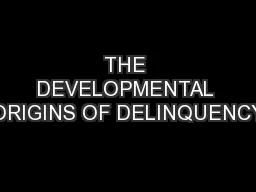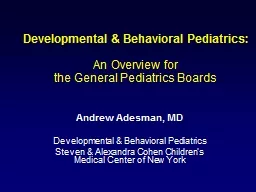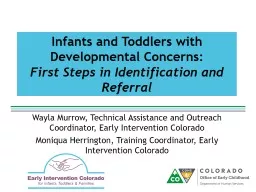PPT-THE DEVELOPMENTAL ORIGINS OF DELINQUENCY
Author : debby-jeon | Published Date : 2017-06-30
George E Davis MD New Mexico Department of Children Youth and Families for Child Trauma Academy Juvenile arrest rate highest ever in 1996 and then declined 48
Presentation Embed Code
Download Presentation
Download Presentation The PPT/PDF document "THE DEVELOPMENTAL ORIGINS OF DELINQUENCY" is the property of its rightful owner. Permission is granted to download and print the materials on this website for personal, non-commercial use only, and to display it on your personal computer provided you do not modify the materials and that you retain all copyright notices contained in the materials. By downloading content from our website, you accept the terms of this agreement.
THE DEVELOPMENTAL ORIGINS OF DELINQUENCY: Transcript
Download Rules Of Document
"THE DEVELOPMENTAL ORIGINS OF DELINQUENCY"The content belongs to its owner. You may download and print it for personal use, without modification, and keep all copyright notices. By downloading, you agree to these terms.
Related Documents














